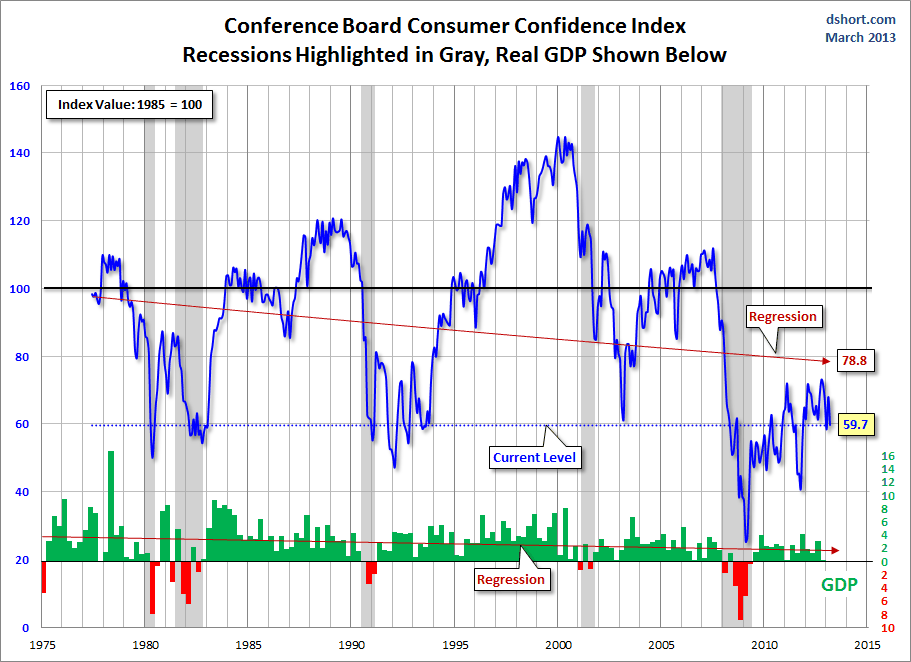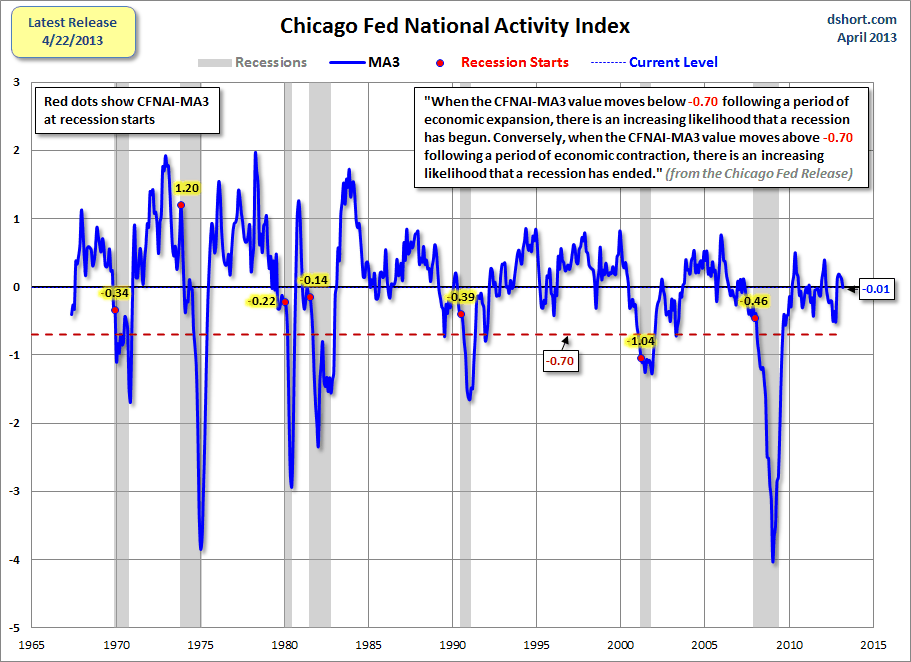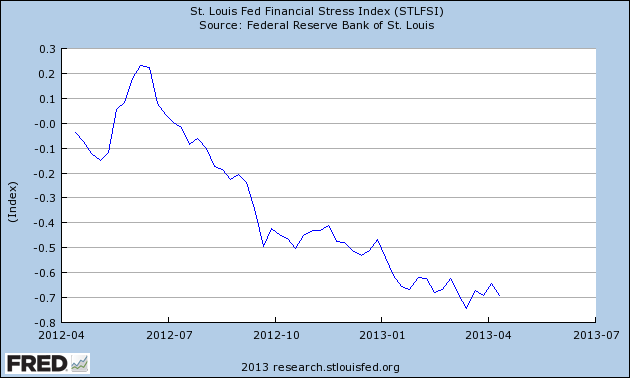On April 25, The Conference Board released its 1st Quarter CEO Confidence Survey. The overall measure of CEO Confidence was at 54, up from 46 in the fourth quarter. [note: a reading of more than 50 points reflects more positive than negative responses]
Notable excerpts from this April 25 Press Release include:
CEOs’ assessment of current economic conditions has grown more positive, with 36 percent claiming conditions are better compared to six months ago, up from 15 percent last quarter. About 29 percent of business leaders say conditions in their own industries have improved, compared with approximately 13 percent in the fourth quarter of 2012.
CEOs’ short-term outlook is also more optimistic. Currently, 32 percent of business leaders expect economic conditions to improve over the next six months, up from 23 percent last quarter. Expectations for their own industries are also more upbeat, with 33 percent of CEOs anticipating an improvement in conditions in the months ahead, up from 19 percent in the fourth quarter.
The Business Roundtable also released its CEO Economic Outlook Survey for the 1st Quarter of 2013 last month. Notable excerpts from the March 12 release, titled “CEOs Expect Increased Sales and Capital Spending During Next Six Months” include the following:
CEO economic expectations increased for the first time in four quarters. BRT CEOs also expect 2.1 percent growth for 2013, a slight increase from last quarter’s estimate of 2.0 percent.
also:
The Business Roundtable CEO Economic Outlook Survey Index – a composite index of CEO expectations for the next six months of sales, capital spending and employment – increased significantly in the first quarter of 2013 to 81.0 from 65.6 in the fourth quarter of last year. The Index signals expected continued economic expansion and is at its highest level since the second quarter of 2012. The current Index is at about its long-term average level of 79.2.
_____
I post various economic forecasts because I believe they should be carefully monitored. However, as those familiar with this blog are aware, I do not necessarily agree with many of the consensus estimates and much of the commentary in these forecast surveys.
_____
The Special Note summarizes my overall thoughts about our economic situation
SPX at 1582.24 as this post is written
























